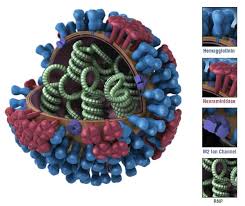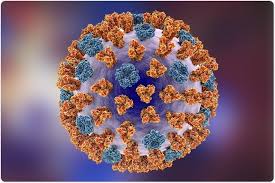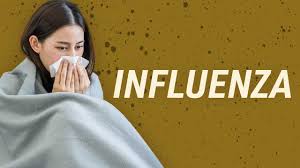INFLUENZA
Certainly! Here’s a detailed overview of influenza, covering its history, biology, transmission, symptoms, impact, and prevention strategies.
Introduction
Influenza, commonly known as the flu, is an infectious disease caused by influenza viruses. It affects millions of people worldwide each year, leading to significant morbidity and mortality. The virus can cause seasonal epidemics and, at times, pandemics, which can result in severe health crises. Understanding influenza involves examining its types, transmission, symptoms, and public health responses.
History of Influenza
Influenza has a long and complex history, with documented pandemics dating back to the 16th century. The most notable influenza pandemics include:
- 1918-1919 Spanish Flu: This pandemic is estimated to have infected one-third of the world’s population and resulted in approximately 50 million deaths. The H1N1 strain was responsible, and it disproportionately affected young, healthy individuals.
- 1957-1958 Asian Flu: Caused by the H2N2 strain, this pandemic led to around 1 million deaths worldwide.
- 1968-1969 Hong Kong Flu: The H3N2 strain caused this pandemic, resulting in approximately 1 million deaths globally.
- 2009 H1N1 Pandemic: This novel H1N1 strain emerged and spread rapidly, but it generally resulted in milder disease compared to previous pandemics.
Virus Classification and Structure
Influenza viruses belong to the Orthomyxoviridae family and are classified into four main types: A, B, C, and D.
- Influenza A: This type is the most common cause of seasonal flu epidemics and is responsible for pandemics. It infects humans and various animals, including birds and pigs.
- Influenza B: Primarily affects humans and can lead to seasonal outbreaks. It has two lineages: B/Yamagata and B/Victoria.
- Influenza C: Causes mild respiratory illness and is not associated with epidemics.
- Influenza D: Primarily affects cattle and is not known to infect humans.
Structure of the Virus
Influenza viruses have a segmented, single-stranded RNA genome, which allows for genetic reassortment. Key components of the virus include:
- Hemagglutinin (HA): A surface protein that allows the virus to bind to host cells.
- Neuraminidase (NA): Another surface protein that helps release new viral particles from infected cells.
- Matrix Proteins: These proteins play roles in virus assembly and stability.
Transmission and Spread
Influenza viruses spread primarily through respiratory droplets when an infected person coughs, sneezes, or talks. They can also be transmitted by touching surfaces contaminated with the virus and then touching the face. The infectious period typically begins one day before symptoms appear and lasts for about five to seven days after onset.
Symptoms and Clinical Manifestations
Influenza can present a range of symptoms, often resembling those of a common cold but typically more severe. Common symptoms include:
- High fever
- Chills
- Muscle aches
- Fatigue
- Cough

- Sore throat
- Runny or stuffy nose
- Headaches
- Gastrointestinal symptoms (more common in children)
While most individuals recover within a week, influenza can lead to serious complications, especially in high-risk groups, including the elderly, young children, pregnant women, and those with chronic health conditions. Complications may include:
- Pneumonia
- Bronchitis
- Sinus infections
- Worsening of chronic medical conditions
Impact on Public Health
Influenza poses significant public health challenges. Each year, seasonal influenza epidemics lead to millions of cases of illness, hundreds of thousands of hospitalizations, and tens of thousands of deaths globally.
The Centers for Disease Control and Prevention (CDC) estimates that seasonal flu results in between 9 million to 40 million illnesses, 140,000 to 710,000 hospitalizations, and 12,000 to 56,000 deaths in the United States alone annually.
Prevention Strategies
Preventing influenza involves several strategies:
Vaccination
Vaccination is the most effective way to reduce the risk of influenza and its complications. Annual flu vaccines are formulated to protect against the most common circulating strains. There are two main types of vaccines:
- Inactivated Influenza Vaccines (IIV): These contain killed virus particles and are the most commonly used.
- Live Attenuated Influenza Vaccines (LAIV): These contain weakened live virus and are administered as a nasal spray.
It is recommended that everyone aged six months and older receive an annual flu vaccine, especially those in high-risk groups.
Antiviral Medications
Antiviral medications can help reduce the severity and duration of influenza symptoms if taken early in the course of the illness. Common antiviral drugs include:
- Oseltamivir (Tamiflu)
- Zanamivir (Relenza)
- Baloxavir marboxil (Xofluza)
These medications can be particularly beneficial for those at high risk of complications.
Public Health Measures
In addition to vaccination, public health measures are crucial in controlling influenza transmission:
- Hand Hygiene: Regular handwashing with soap and water or using hand sanitizer can reduce the spread of the virus.
- Respiratory Etiquette: Covering coughs and sneezes with a tissue or elbow can help prevent droplet spread.
- Isolation: Staying home when ill and avoiding close contact with sick individuals can reduce transmission.
Surveillance and Response
Influenza surveillance is critical for monitoring virus activity and guiding vaccine formulation. Organizations like the CDC and WHO conduct surveillance to track circulating strains and their geographic spread. This data informs public health responses and helps anticipate potential outbreaks.
The Role of Pandemics
Influenza pandemics highlight the need for preparedness and response strategies. The emergence of new strains through genetic reassortment can lead to pandemics, as seen in 1918 and 2009. Monitoring animal reservoirs (especially birds and pigs) is crucial to detect potential zoonotic transmissions.
Global Health Initiatives
Various global health initiatives aim to improve influenza preparedness and response:
- Global Influenza Surveillance and Response System (GISRS): A network that monitors influenza viruses worldwide and assists in vaccine strain selection.
- Vaccination Programs: Efforts to increase vaccine coverage, particularly in low-income countries, to prevent seasonal outbreaks.
Conclusion
Influenza remains a significant global health challenge, with the potential for severe health impacts and economic costs. Understanding the virus’s biology, transmission, and prevention strategies is essential for reducing its burden. Continued vigilance, research, and public health initiatives are necessary to mitigate the effects of influenza and prepare for future outbreaks. Through vaccination, surveillance, and public health measures, we can work towards a healthier future and reduce the impact of influenza on communities worldwide.
